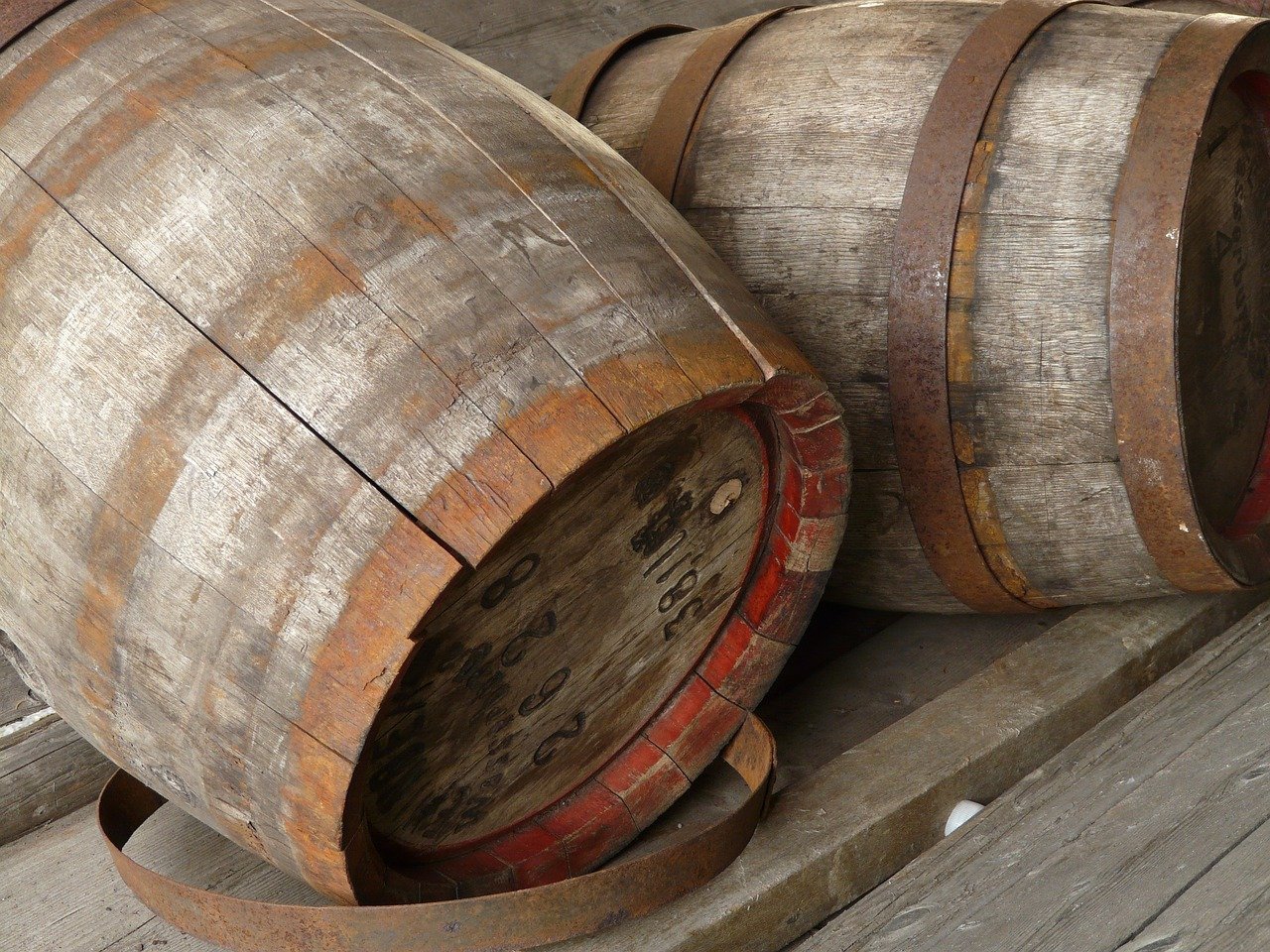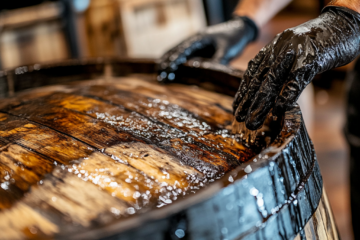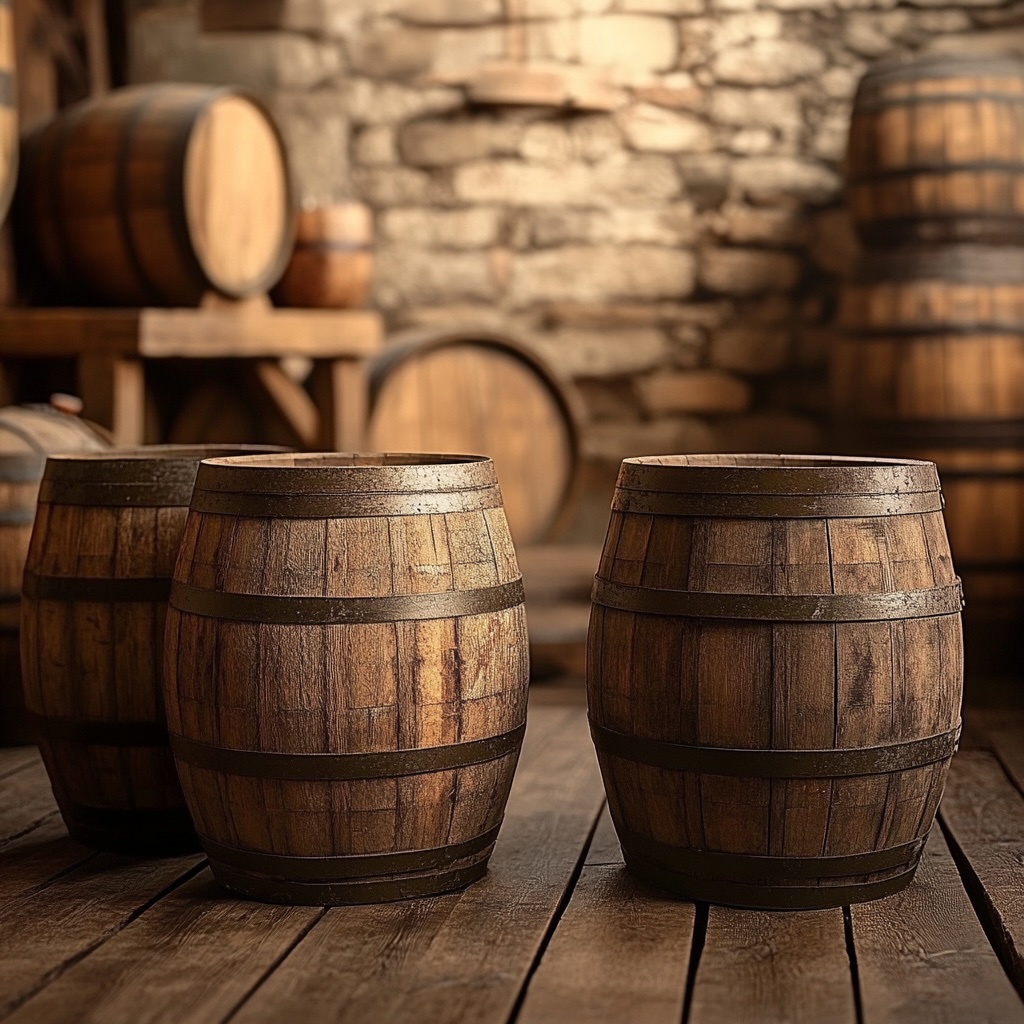FAQ - all you need to know about oak wood barrels
What is the function of oak barrels?
Wooden barrels are pot-bellied vessels made of staves. Many sorts of wine and whiskey need to go through the process of aging in oak barrels.
Those liquors absorb some components from oak wood, like tannins and vanillin. Naturally, the content of these substances varies in different kinds of oak, giving off different flavors to the beverages. That depends not only on the region in which oak occurs but on the processing of the oak wood as well.
What is the manufacturing process of new barrels?
First of all, they carve staves out of wood. These are long planks that are wider in the middle. This unique form is important for the future water-tightness of the barrel. There are no nails or adhesives involved. It’s merely staves being carefully adjusted to one another in a metal hoop. Later they would expand under the high temperature and humidity to further cementing of the stave joints. When the sides of the barrel are fixated, they get cropped to one level mechanically. The machine makes crosses for the barrel heads. All the hoops are put in place. It’s necessary to make sure the barrel is liquid-tight. Then it‘s polished and stamped with the brand of the coopery as a final step before delivering it to the distillery or the winery.
But before all that ― even before staves take their final form ― they dry. It takes years and affects spirits’ qualities significantly. Therefore, drying conditions must be different for wine and whiskey barrels.
What is the difference in seasoning of staves for wine and whiskey barrels?
Previously to bending and carving, staves are drying, or seasoning. The minimum amount of moisture they have to lose is about 15%. If it’s less, barrels will eventually dry up and leak. Staves for wine barrels are being seasoned for 2 years or more. They are left in the open air, on platforms, to be under the impact of the environment. It helps to reduce the crudest substances in oak and to soften the aromas. For whiskey barrel staves it doesn’t take so long due to the usage of drying chambers. It seems that this is more beneficial for barrel producers. It’s not much of a rule now, because distillers and winemakers are experimenting with the barrels all the time. Producers of whiskey occasionally want them seasoned the natural way, too. And vice versa, there is a trend to age some sorts of wine in old whiskey barrels.
What is better: toasting or charring?
This stage also normally differs for wine and whiskey. It’s done mostly with completed barrels to influence the taste and the scent of liquors.
These two ways of processing vary in intensity. Wine barrels are “toasted” on an oakwood fire. This method gilds them and adds to interesting vague notes in the wine. There are three degrees of toasting: light, medium and dark, with various results in the beverage’s flavor. The effect doesn’t last long: the next couple of years flavors are noticeably fainter, and then they disappear. That is why wine barrels are only used (for wine aging, at least) for about 2 to 3 years. The whiskey barrels can be used for 10 years and more. Let’s see what method is used for them.
It’s called charring, and it’s more intensive and close contact between flame and oak surface of the barrel. As an outcome, it becomes black and crispy. There is no use of firewood, just gas.
Char is a natural filter that draws out bad substances. But, more importantly, it infuses distinctive flavors, desirable for good whiskeys. This type of odor prevails over everything else, so it’s too strong for delicate wines.
But, as usual, nothing is a formula, and some cooperages may combine both techniques, charring plus toasting, for whiskey barrels.
Why oak wood is best for barrels?
No wonder, oak is the preferred material for wine and whiskey barrels. This wood is solid. Its structure allows them to be waterproof and breathable at the same time. Oxidation is an important part of aging. Big amounts of air are bad for the drink’s quality, but small portions seeping gradually inside the barrel through microscopic pores stimulate maturation the way it should proceed.
How does oak barrel affect the wine?
Strong drinks turn into darker and more flavorus sorts of drinks while aging in oak barrels. Whiskeys become recognizable spirits people around the world appreciate so much. Charred oak flavor is the quality mark in itself.
Oak alleviates sharp notes in wines. It enriches them with smoke, clove, coconut, or vanilla flavors, depending on the type of oak. Standards of the wine industry forbid to use of any flavoring agents, but oak is agreeable for enhancing the characteristics of wine. Generally, it’s good for malolactic reactions to take place in oak barrels. These reactions are the cause of a nice buttery taste.
Are there any distinctions in the way whiskey and wine barrels look?
Wine and whiskey barrels don’t look the same. Wine barrels usually look newer, cleaner, and somewhat lighter in color. Wooden parts don’t have any defects on them, and hoops are made from zinc-coated steel. Whereas whiskey barrels’ staves are shabby, rough, and joined by blackened steel hoops (which are, mostly, to match the style). Whiskey casks may be covered with knots, which can cause leaks of the product.
The reason is that coopers are simply using a better wood for wine barrels to avoid this. You don’t want bacteria to interfere with the complicated process of fermentation. For hard liquor, like whiskey, it’s not so vital. Also, considering the texture of whiskey, it’s less likely to leak through the small gaps, where wine would probably leak out.
As a result, staves that do not meet standards for wineries are often used for making whiskey barrels.
What oak species are wooden barrels made from?
The most popular choices for wood barrels are American oak and French oak. When it comes to aromatic values, the first one is more dominant, while the second one is valued for its gentleness and palatability. French oak barrels are considered a classic among many winemakers, they are denser than American oak barrels, but they are more expensive too. And quite noticeably so. Their price can be three times more than barrels of American oak. It’s a truly huge item of expenditure for wine producers.
Still, the generally acknowledged specie for whiskey is American white oak. It is sometimes even demanded by regulations — for drinks such as Bourbon.
How does size of barrel impact flavor of spirits?
The size of the barrel is also should be taken into account. The higher the surface area of the barrel touches the wine or the whiskey, the greater oak’s influence on it. So, the biggest impact is observed in the smallest barrels.
What oak species are wooden barrels made from?
The most popular choices for wood barrels are American oak and French oak. When it comes to aromatic values, the first one is more dominant, while the second one is valued for its gentleness and palatability. French oak barrels are considered a classic among many winemakers, they are denser than American oak barrels, but they are more expensive too. And quite noticeably so. Their price can be three times more than barrels of American oak. It’s a truly huge item of expenditure for wine producers.
Still, the generally acknowledged specie for whiskey is American white oak. It is sometimes even demanded by regulations — for drinks such as Bourbon.
What sizes of barrels are in use for wind and whiskey?
There are many types of barrels. The regular size for whiskey starts is 53 gallons (200 liters). A standard wine barrel contains 59 gallons (225 liters), or 60 gallons (228 liters). It depends on the kind of wine. Besides, wine barrels with the same volume are fluctuating as far as their height and diameter are concerned.
Here are some different oak barrels’ sizes:
- 13 gallons ― Quarter Cask;
- 79 gallons ― Cognac type;
- 171.7 gallons ― Port Pipe, Madeira Drum;
- 132 gallons ― Sherry Puncheon, Machine Puncheon, Sherry Butt.




